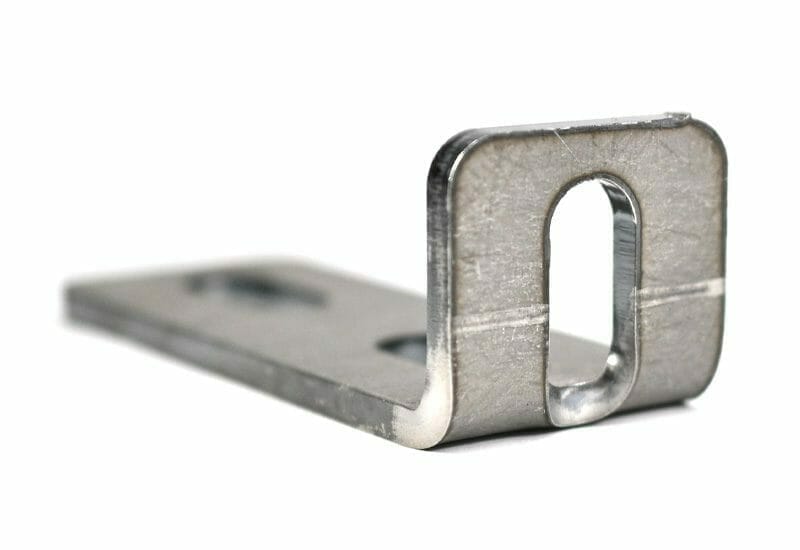With our growing list of services, we are your one-stop shop for sheet material processing and finishing. Included in this list is our online sheet metal tapping service, which is unbeatable in price, speed, and accuracy. Let’s walk through the capabilities of our tapping services and how to utilize them alongside our other offered processes.
Best Materials for Tapping
We offer a selection of high-quality materials in various thicknesses for our sheet metal tapping service. With both metals and plastics represented in our lineup as candidates for tapping, we cover a wide range of potential projects and parts. We have chosen these materials specifically because they have proven to be most successful out of all our materials when tapped. Tapping materials that are too hard or too dense can result in an inaccurate or undesirable end result.
Materials Currently Available for Tapping:
- 0.063”-0.500” 5052/6061/7075 Aluminum
- 0.063”-0.250” Copper
- 0.063”-0.250” Brass
- 0.060”-0.500” 304 Stainless Steel
- 0.059”-0.500” Mild Steel
- 0.125”-0.250” Delrin
- 0.250”-0.500” HDPE
- 0.125”-0.250” ABS

Tapping Minimums and Maximums
You’ll notice on our Processing Min/Max sheet that the minimum part size for tapping doesn’t change depending on the material and its thickness, unlike with our other processes. This is because tapping isn’t limited by the overall part size, and the only thing that changes depending on the material and its thickness is the minimum and maximum tap size available.
There are two reasons why we maintain these minimum and maximum tap sizes:
- Hole size. The size of the tap used is dependent upon the size of the hole cut into the part. As you can see in our guidelines, the minimum hole size allowed for a part is dependent upon the thickness and type of material. For example, thicker materials have a larger minimum hole diameter than thinner materials, so the tap size is adjusted accordingly.
- Thread engagement and diameter to depth ratio. The soft materials we offer for tapping (aluminum, brass, copper, and plastics) benefit from higher thread engagement, while the steels we offer for tapping are better suited for low thread engagement. (Check out our article on Designing for Tapping to better understand thread engagement.) In addition to thread engagement, you will need to make sure you take the hardware diameter to depth ratio into account. For the best applications, we recommend a thickness that’s 1-1.5 times the diameter to depth ratio.
Tapping and Our Other Services
We encourage you to use our tapping service alongside our other services, keeping a few things in mind when you do.
Tapping and Bending
The most important thing to keep in mind when designing tapped holes on parts with bends is to keep the holes far away from the die lines. Holes and other cut geometry that are too close to or within the die lines will warp during the bending process. This can be especially detrimental for tapped parts because the threads created during tapping can warp to the point of being unusable in conjunction with hardware. Check out our Guide to Designing Features Around Bend Lines to learn the best practices for making sure your tapped holes won’t warp during bending!

When you upload your tapped and bent parts to our website for quoting, review the 3D preview of your part to see what the final product will look like. It will be easy to tell if your geometry is too close to the bend lines, and you’ll easily be able to upload a new design with the correct spacing!
Tapping and Powder Coating
Our self-service powder coating is simple to use, affordable, and it leaves your parts looking finished and professional. We recommend using it alongside all of our other services, but there is one important thing to remember if you want to powder coat tapped parts.
At this time, we cannot plug tapped holes on parts that are being powder coated. Parts are tapped prior to getting powder coated, so the threads we create during tapping will likely fill with coating. This is easy enough to fix: after you receive your parts, chase the tapped hole with a hand tap or your intended hardware and the coating will break away from the threads, leaving a clean tapped hole. Keep in mind that this will remove any color/finish from the tapped hole!
Check out our powder coating guidelines to learn how to design your parts for powder coating.
Ordering Tapped Parts
We pride ourselves on our lineup of fast, affordable, and high quality services. Our online sheet metal tapping service allows us to help you expand your product lines, bring new projects to life, or just explore the world of sheet metal manufacturing and assembly. When you add tapping to your parts, it only adds about 1-2 business days to the overall production time for your order. In addition to our normal processing times, that means your tapped parts can ship within 6-7 business days of placing your order!
The best way to make sure you get your tapped parts quickly is ensuring that they fit within our guidelines for manufacturing and tapping, as well as any other post-process operations you may add to your order. Once you’ve checked your design against our guidelines, just upload the file to our website and get instant pricing!





